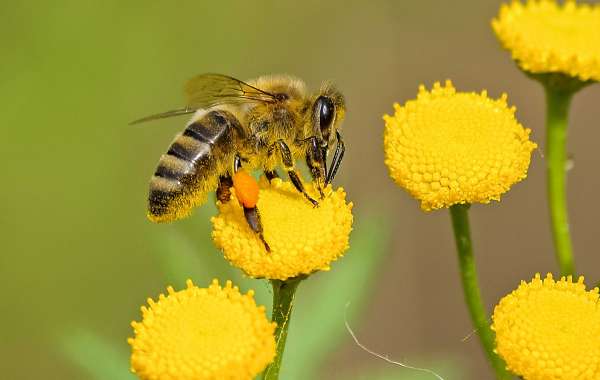Don’t Let Bees and Wasps Ruin Your Hike
On a hike, you are vulnerable to the elements. When you are on the hike alone, you may be even more vulnerable and unsure of what to do if something were to go wrong. You should be prepared any time that you enter the woods. It does not matter if you plan to hike all day and set up camp for the night or only plan to hike a short distance into the woods and return home within the next few hours. What matters is that you are sharing the woods with bees and wasps that are capable of stinging humans. If you catch yourself stung by a bee, here is what you can do to treat it right away.
Check for Stinger
After a sting, you want to remove the stinger first. This is the start to ending your discomfort. All bees leave the stinger behind. If you cannot find a stinger, then you may have been dealing with a wasp. A wasp will not leave a stinger behind. The stinger itself continues to release venom and so you want to remove it as quickly as possible. You can do this with your fingers or by scraping the stinger out with a fingernail.
Take Antihistamine
There are many antihistamines on the market for you to try. Antihistamines are best used when relieving allergies. Both bees and wasps can leave you itchy and swollen after a sting. An oral antihistamine can help to alleviate those symptoms quickly. You should always pack antihistamines with you, particularly when you are hiking alone. If you are stung, it is as easy as taking a pill to help alleviate your symptoms.
Use Cold Compresses
Bee stings respond well to cold compresses. When on a hike, you should always have a first aid kit with you. Anything can happen when you are on your own. It’s crucial that you are prepared. Along with food and water, your backpack should have the essentials for medical care. One of these essentials includes an ice pack or cold compress that you can travel with. There are ice packs and compresses that are specifically designed for hikers. After your sting, apply a cold compress to the area to help with swelling and pain.
For most people, bee stings do not cause a serious reaction. However, in some people, bee poisoning may occur. If you have an allergy towards bees or know yourself to be sensitive to the sting, then you should always have a bee sting kit with you. EpiPens are a necessity, regardless of where you are, if you are allergic to bees. Bee stings can happen anywhere, but when you’re hiking, the risk is much higher. Symptoms of bee allergy include wheezing, hives and swelling. This can happen right away or up to two hours later. Once stung, inject yourself and then take an antihistamine.
Take Preventative Measures
One of the best ways to treat a sting is to not have to worry about it at all. To prevent a sting, you may want to refrain from wearing any fragrant lotions or perfumes while you are on your hike. These scents may attract bees. In addition, make sure that you look for nests or fallen logs before you set up camp for the night. If you have food, make sure that you keep it locked up tight and stored properly. If you have to, do not leave the food near you when you set up camp.
Bee and wasp stings can be extremely painful and long lasting when not properly taken care of. For those with an allergy, they can even be life threatening. No matter what time of year you take your hike, you want to make sure that you have taken the proper precautions that will protect you against any bee or wasp stings. The remedies are simple and easy to pack along with you for the trip. An antihistamine, cold compress or an EpiPen may be all that you need.






